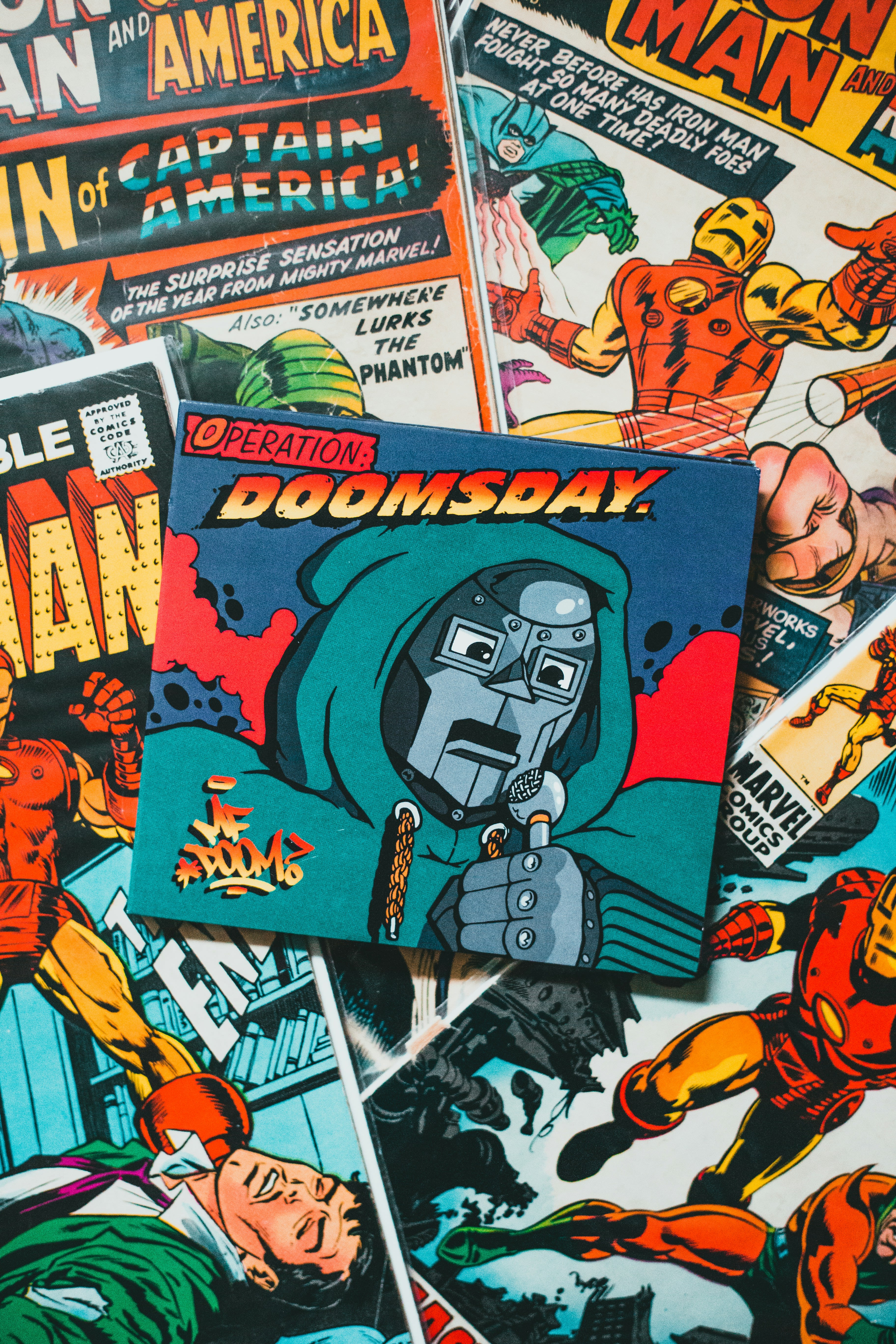Comics, Technology and the impact of AI
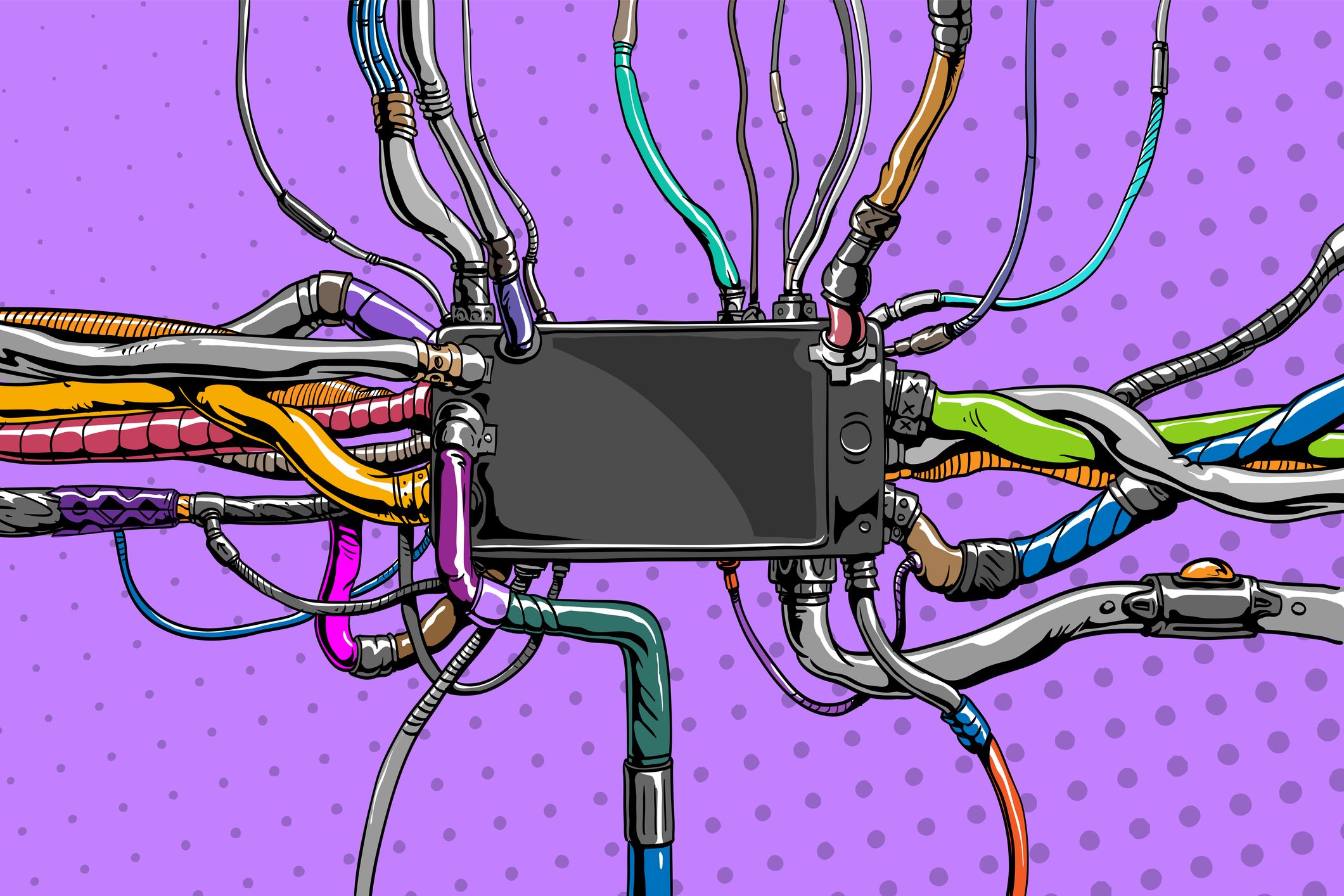
Some key thoughts from Dr Geraint D'Arcy and other experts in the field as they explore comics and technologies, and the impact of AI on the artform.
Introduction
Dr Geraint D'Arcy
Associate Professor in Media Practice, UEA
AI: the hot-button topic
Technology is the hot-button topic across the media sector with discussions around AI and art becoming heated: the art community, with comics a major part of that, along with media, television and film in general are not actually that happy about AI. The creative industries tend to like being creative and feel that AI 'sucks the fun out of life' – and many resent its reuse of other people’s creative work. There is also the dawning revelation that AI’s environmental costs far outweigh its benefits. Considering how large the comics industry is globally, it probably makes some sense that the technologically invested (and investors in technology) are interested, but those of us who enjoy drawing, and comics creators in general, are not particularly smitten with that emerging tech. We are however interested in how technology affects the production and distribution of comics, how comics can be used to explain, explore and represent technologies, and how technology and comics art can help establish relationships and build collaborations across disciplinary and international borders.
"Comics ... are a multi-disciplinary, culturally ubiquitous form that uses language and image to reflect, analyse, explain and reshape society."
Comics (and all its associated forms such as graphic novels, manga, fumetti, photo-novellas, cartoon strips, digital comics, interactive comics, memes, graphics communications etc) are a multi-disciplinary, culturally ubiquitous form that uses language and image to reflect, analyse, explain and reshape society. The exploration of comics and technology is an important and culturally prominent investigation. To give some idea of how this is seen across the comics studies community, here, some members of the IGNCC discuss how they use technology and the unavoidable AI elephant in the room.
Dr Darnel Degand
Assistant Professor, University of California, Davis, US
How does technology benefit your work?
Modern technology has benefitted my work as a researcher and educator by providing me with more communications options. One of my major areas of research is the intersection between stereotypes and the media production experiences of media industry professionals.
Before the pandemic, I met with my research participants for in-person interviews, visits to their job sites, and observations of their workspaces. I recruited these participants at comic book conventions, professional conferences, artists’ gallery showcases, and other in-person events where I could meet potential interviewees.
Yet, like the rest of the world, my plans evolved to meet the demands of our new reality when quarantining, face-mask protocols, reduced air travel options, and safe-distancing measures were put into place to reduce the number of COVID-19 infections.
I began recruiting research participants in the virtual event spaces that had replaced the in-person conferences and conventions. Also, Zoom video conferences were the meeting locations for my interviews. Similarly, I used Zoom to teach my classes and meet with students during office hours throughout the pandemic. However, I still use these same technologies to meet with research participants, colleagues, and students because virtual spaces are a convenient mode of communication that serve as alternatives to in-person or over-the-phone meetings.
Do you believe AI will benefit the comic and graphic novel industry?
“It will take some time before we can comfortably enjoy the benefits of AI because corporations are unfairly feeding artists’ portfolios into AI image-generating platforms.”
AI is yet another technology that has the potential to influence our communications experiences as well as our work as comic artists, but it will take some time before we can comfortably enjoy the benefits of AI because corporations are unfairly feeding artists portfolios into AI image-generating platforms.
However, I believe our most creative comic artists will produce the most innovative examples of comics-related experiences once we figure out how AI technologies can be fairly used. I believe we will use AI to assist us in the continued production of our traditional static print and digital comics.
I also envision a future where AI will make it possible to enjoy specific personalised choose-you-own adventure comics experiences that cannot be experienced more than once. I imagine that some of these experiences will be livestreamed and recorded so that the best experiences can be rewatched.
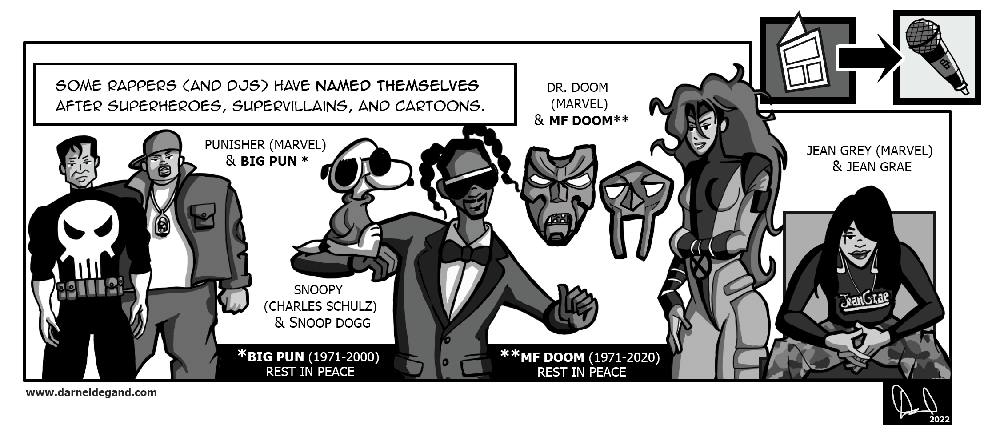
Image from research paper: Dr Darnel Degand. "Comics, emceeing, and graffiti: A graphic narrative about the relationship between hip-hop culture and comics culture." Studies in Comics, 2022.
Image from research paper: Dr Darnel Degand. "Comics, emceeing, and graffiti: A graphic narrative about the relationship between hip-hop culture and comics culture." Studies in Comics, 2022.
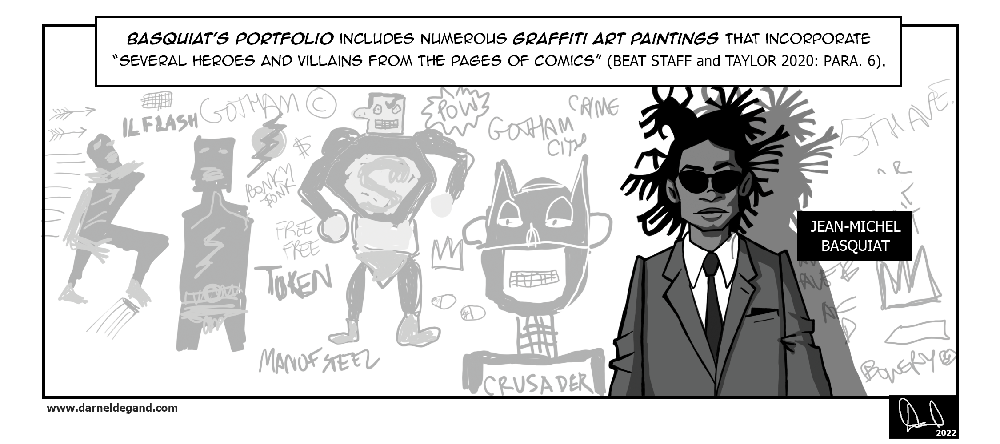
Image from research paper: Dr Darnel Degand. "Comics, emceeing, and graffiti: A graphic narrative about the relationship between hip-hop culture and comics culture." Studies in Comics, 2022.
Image from research paper: Dr Darnel Degand. "Comics, emceeing, and graffiti: A graphic narrative about the relationship between hip-hop culture and comics culture." Studies in Comics, 2022.
Hailey J. Austin
Lecturer in Visual Media and Culture at Abertay University and part of InGAME International
How does technology benefit your work?
My research work is all about the intersections of games and comics, meaning modern technology used to make web or digital comics, or digital games with comic elements are incredibly beneficial to my research work.
The main benefit of technologies for me during the pandemic was being able to digitally interview people in other countries.
I was part of InGAME International which was interested in how to take UK Creative Industries (namely videogames) to the Chinese market and we were able to interview people in China when we were unable to be there in person.
However, for my other project on Sweden’s Female-Forward Creative Industries, I wanted to embrace physical rather than digital research and interviews. I went to Sweden for one month and interviewed comics and games practitioners. As part of my practice, I also made a research travelogue zine to document the human side of the research as a companion to the industry report.
Do you believe AI will benefit the comic and graphic novel industry?
I teach on a computer arts course and we have been teaching game art students design principles through the creation of digital comics. Like the use of AI in games, I think it can be beneficial as a time saver in the drafting stage.
Ultimately, though, I think AI has done and continues to do bad by artists. Though it may benefit the industry in quick prototyping or ideation, I do not think AI, especially AI art, will benefit comics or comic art as a whole. The only exception being that it shows how much human work is needed to make a good comic.
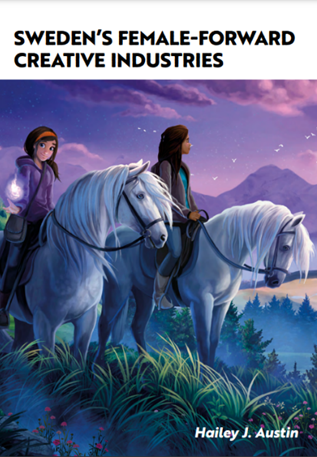
Image: Hailey J. Austin from 'Sweden's Female-Forward Creative Industries' project.
Image: Hailey J. Austin from 'Sweden's Female-Forward Creative Industries' project.
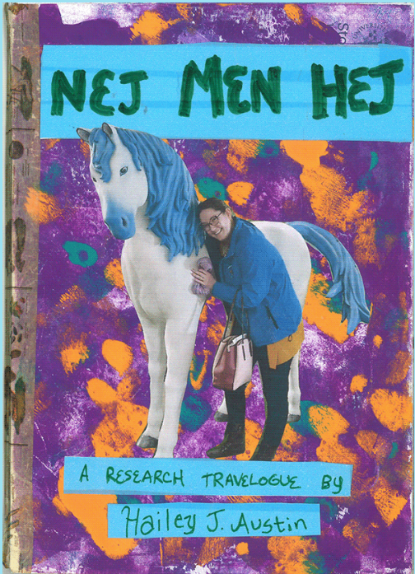
Image: Hailey J. Austin of the zine 'Nej Men Hej: a research travelogue'.
Image: Hailey J. Austin of the zine 'Nej Men Hej: a research travelogue'.
Dr Paul Fisher Davies
Lecturer in English Language and EPQ, East Sussex College Lewes
How does technology benefit your work?
At UEA this year, I’ll be talking about my sketchnoting of academic work at conferences. I started off using an iPad to type notes — and the affordances of this (the things it makes it easy and available to do) include rapid, quiet, searchable note-taking that’s instantly shared between devices and easily accessible. I found, however, that I wasn’t actually accessing these notes very much! They were stored but forgettable.
Keeping analogue sketchnotes, with a brush-pen and ink, drawing the speaker and their ideas and examples, and using comics conventions to capture their gist and memorable quotations, made me much more engaged with the papers I saw. Doing this obliged me to make careful judgements about what to write and what not to; to engage with the abstract closely so I could plan the space I used on the page; and to seek out memorable images and turns of phrase.
It’s also great practice for me, and it turns out people really like seeing themselves in comics form giving their papers — so this ‘analogue’ technology helps oil the wheels of the social mechanisms of conferences. The brush pen isn’t a digital technology, but it’s pretty modern.
Drawing on an iPad can keep the hand-made and human feel, but afford things like ‘undo’ and cut-and-paste, and allow for the layering-in of images taken live or sourced on the internet during the talk. Imaging technologies have long been available to share and edit sketchnotes, whether initially analogue or digital — and scans, pics or exported digital images can be shared on social media platforms.
Do you believe AI will benefit the comic and graphic novel industry?
In lots of ways ‘Artificial Intelligence’ is a misnomer and ‘AI’ isn’t just one thing.
In my day job (lecturing in English Language) we’re mainly grappling with the opportunities and dangers of large language models, and their amazing ability to produce plausible-sounding text. This can be useful for spitting out models of textual style, and prompting the model to produce quite sophisticated text can be fun.
But its appearance of intelligence, being such a sophisticated discourse-producing machine, masks its absence of actual awareness and understanding. It is by its nature generic. When pressed to do creative work, it soon becomes oddly empty and circular. When prompted to produce academic work — and that is of course the temptation for students — it emits ‘essay’ but is often inaccurate and by definition uninspired and unoriginal. So I wouldn’t expect it to be of much help writing comics, whether academic, factual or fictional.
“Where generative models can do some spadework — filling-in, planning and so on to assist a creator — that’s where they are of value.”
Image production is likewise amazing but generic. It might be useful to spit out quick visualisations to help a writer conceive how a page or scene might look. But it’s my contention that comics are essentially a form of human communication — the first sentence of my book Comics as Communication (Palgrave, 2019) asserts this as a starting point.
Just like a creator wouldn’t want to be writing and drawing for ‘AI’ readers, so readers would likely find a completely AI-created work an empty and pointless experience. Where generative models can do some spadework — filling-in, planning and so on to assist a creator — that’s where they are of value.
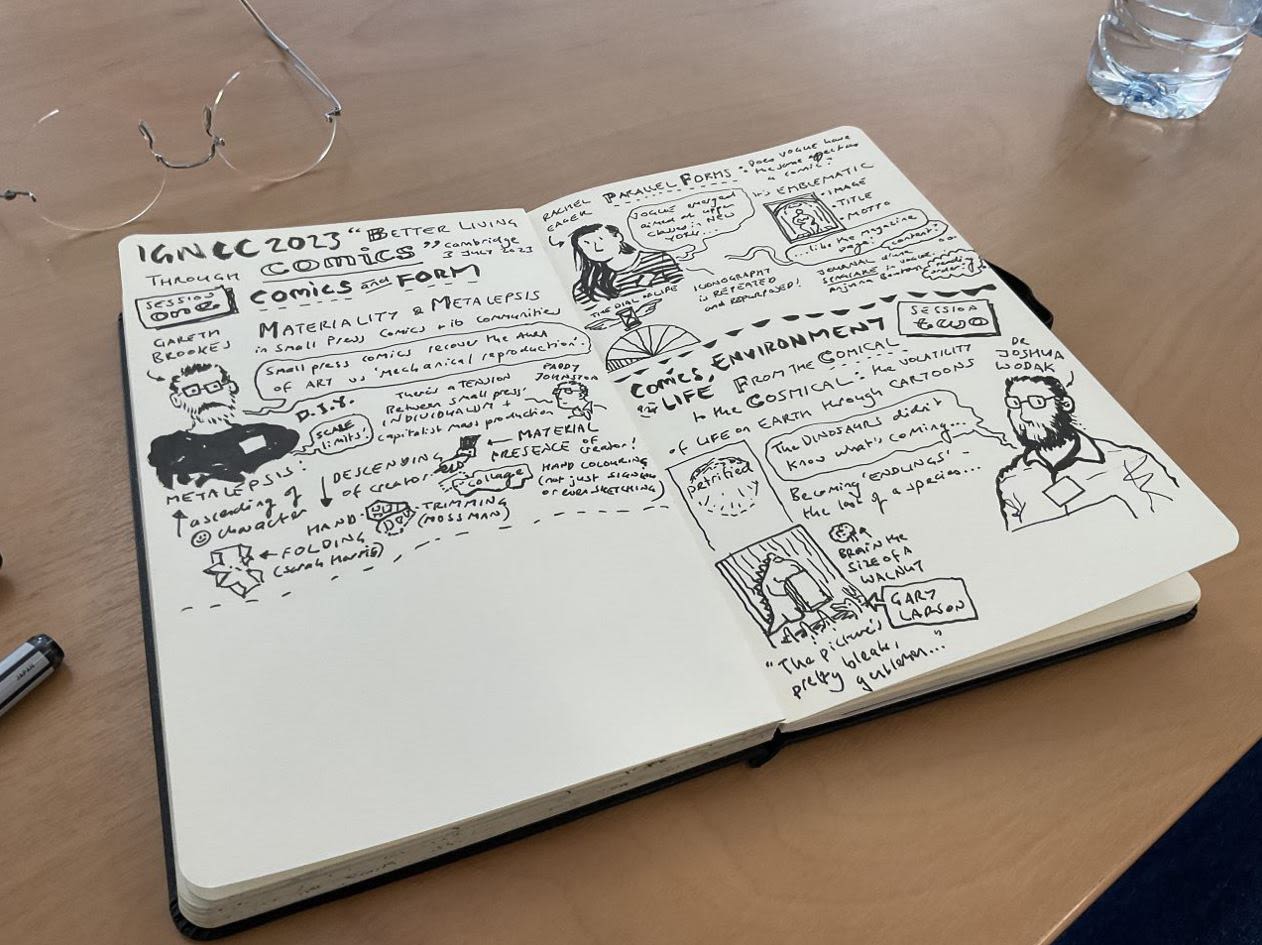
Image: Paul Fisher Davies from IGNCC 2023
Image: Paul Fisher Davies from IGNCC 2023
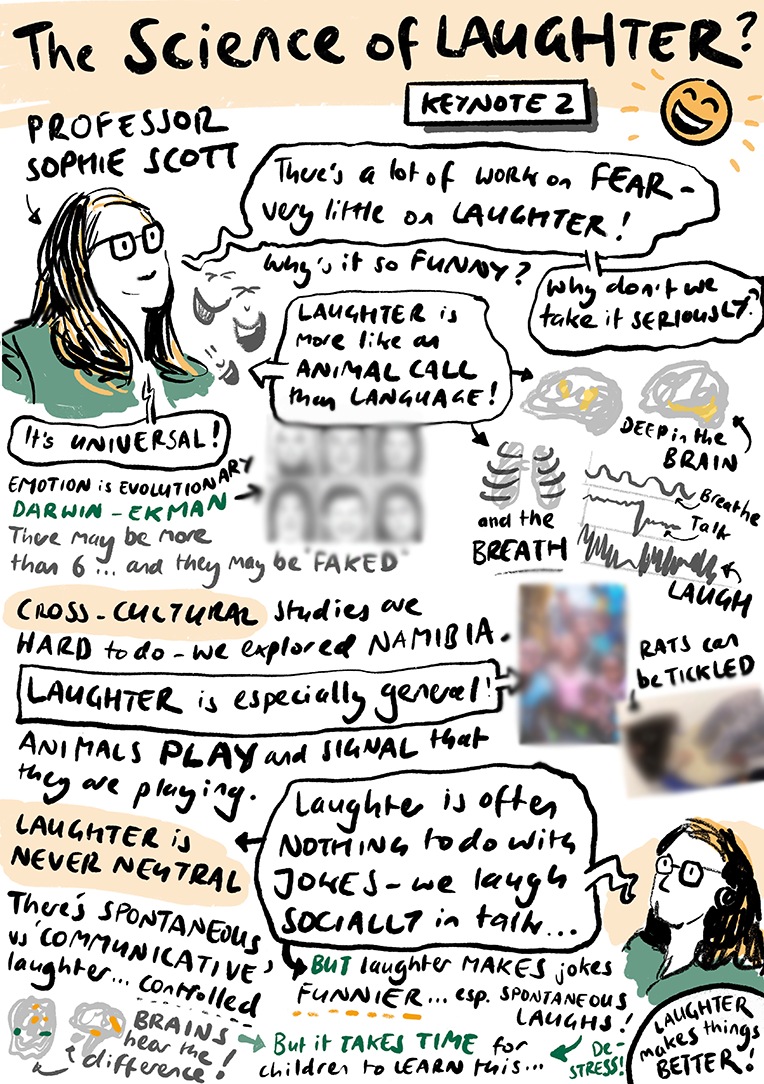
Image: Paul Fisher Davies - Digital Sketchnotes
Image: Paul Fisher Davies - Digital Sketchnotes

